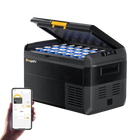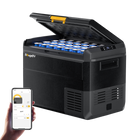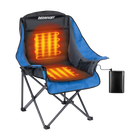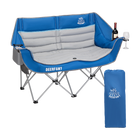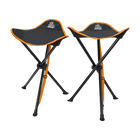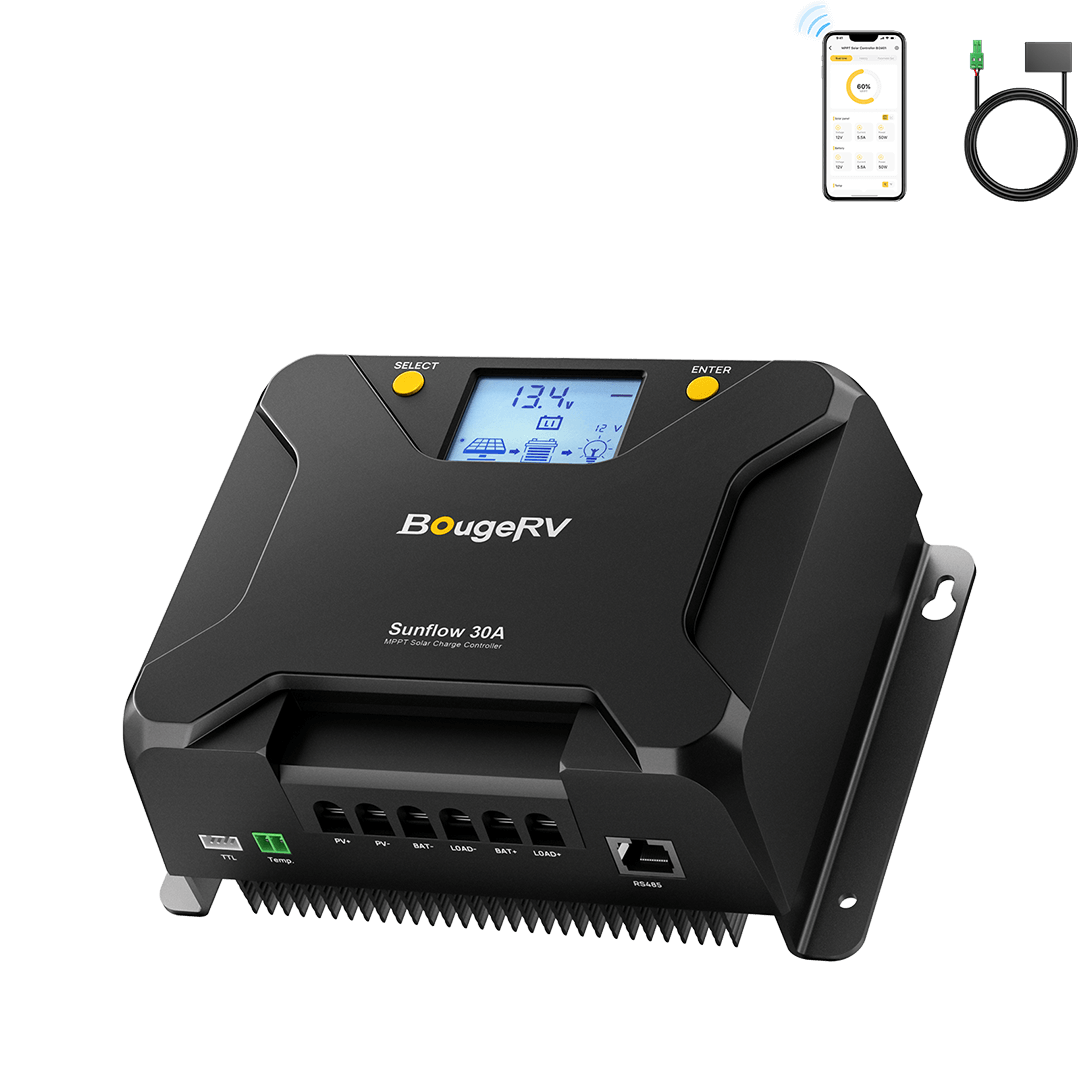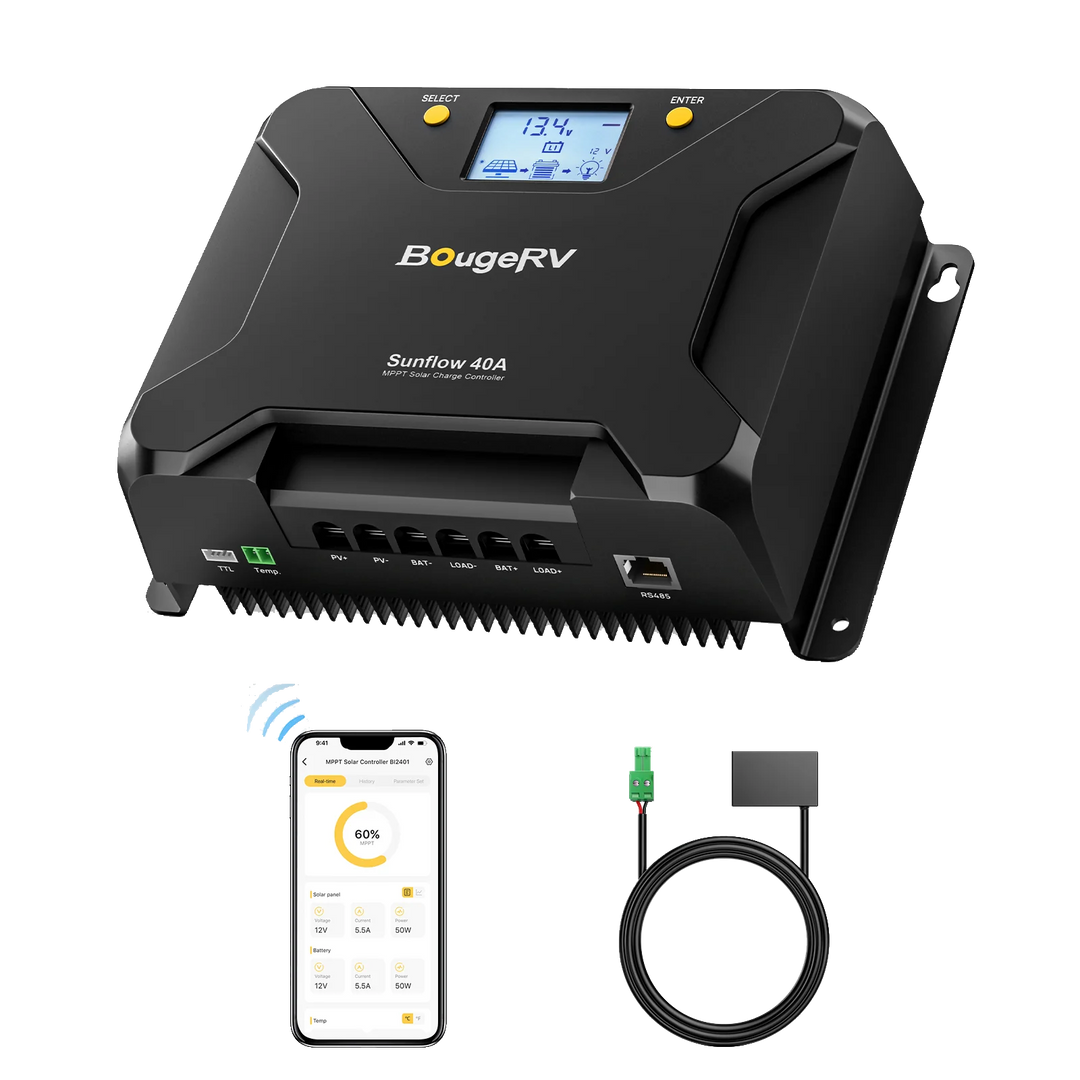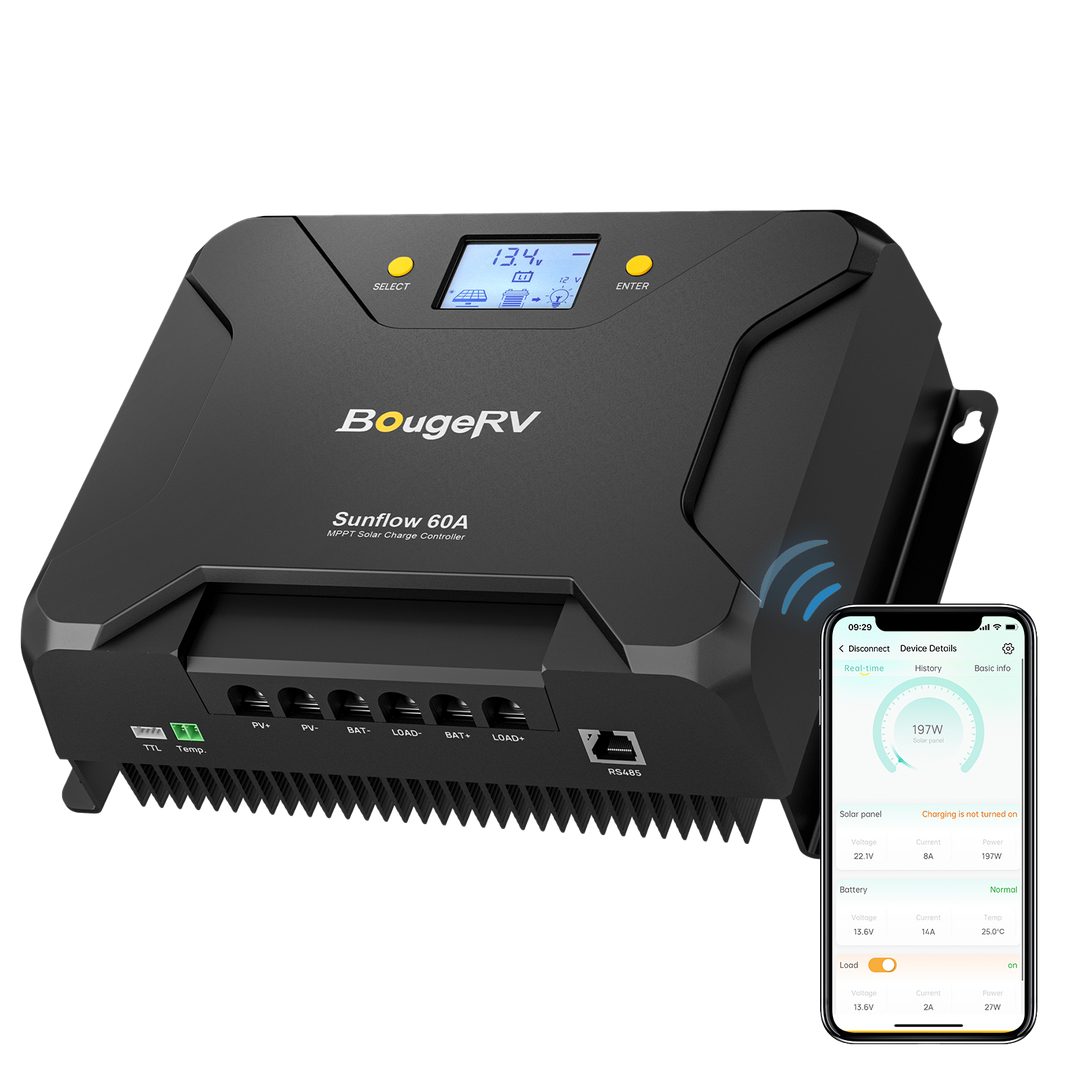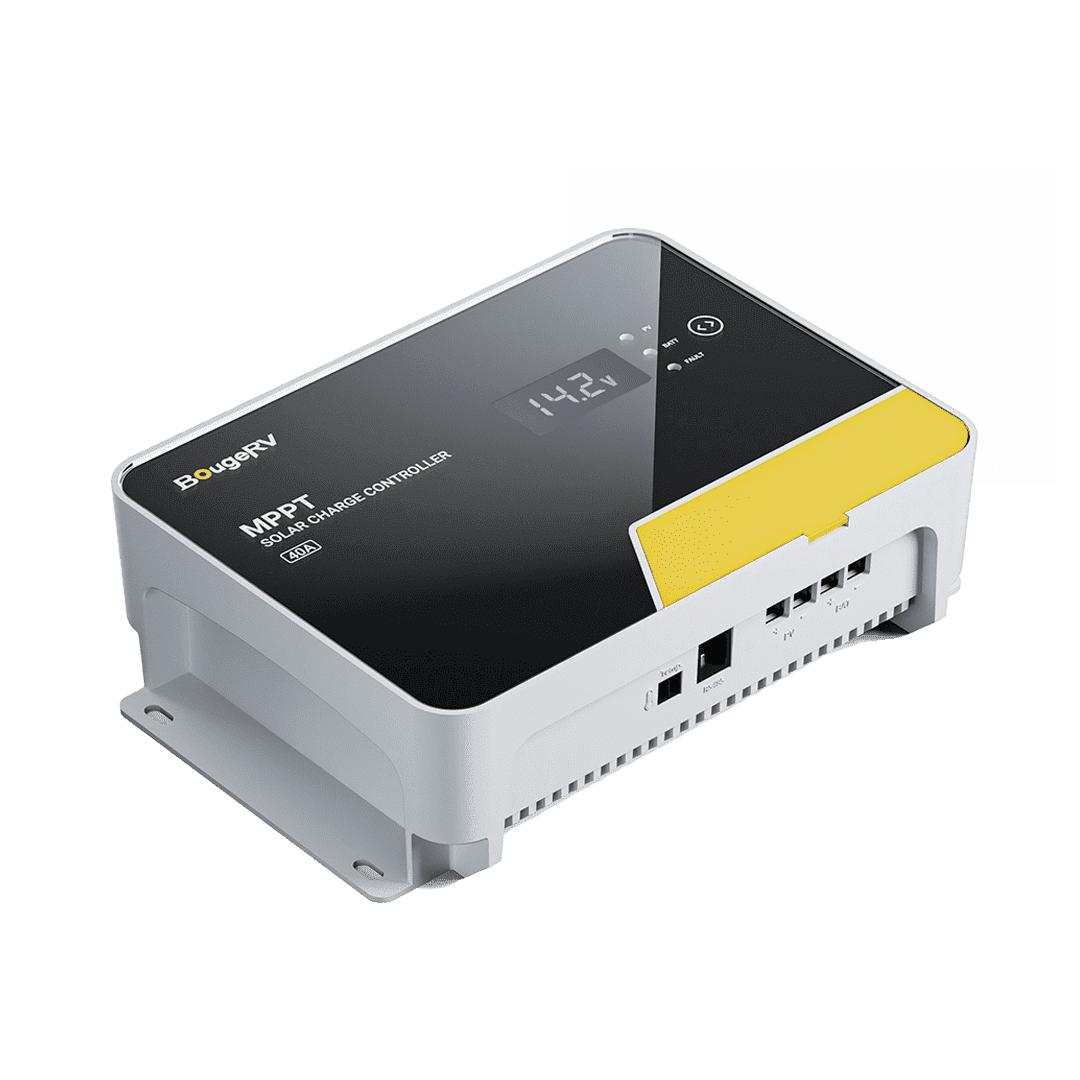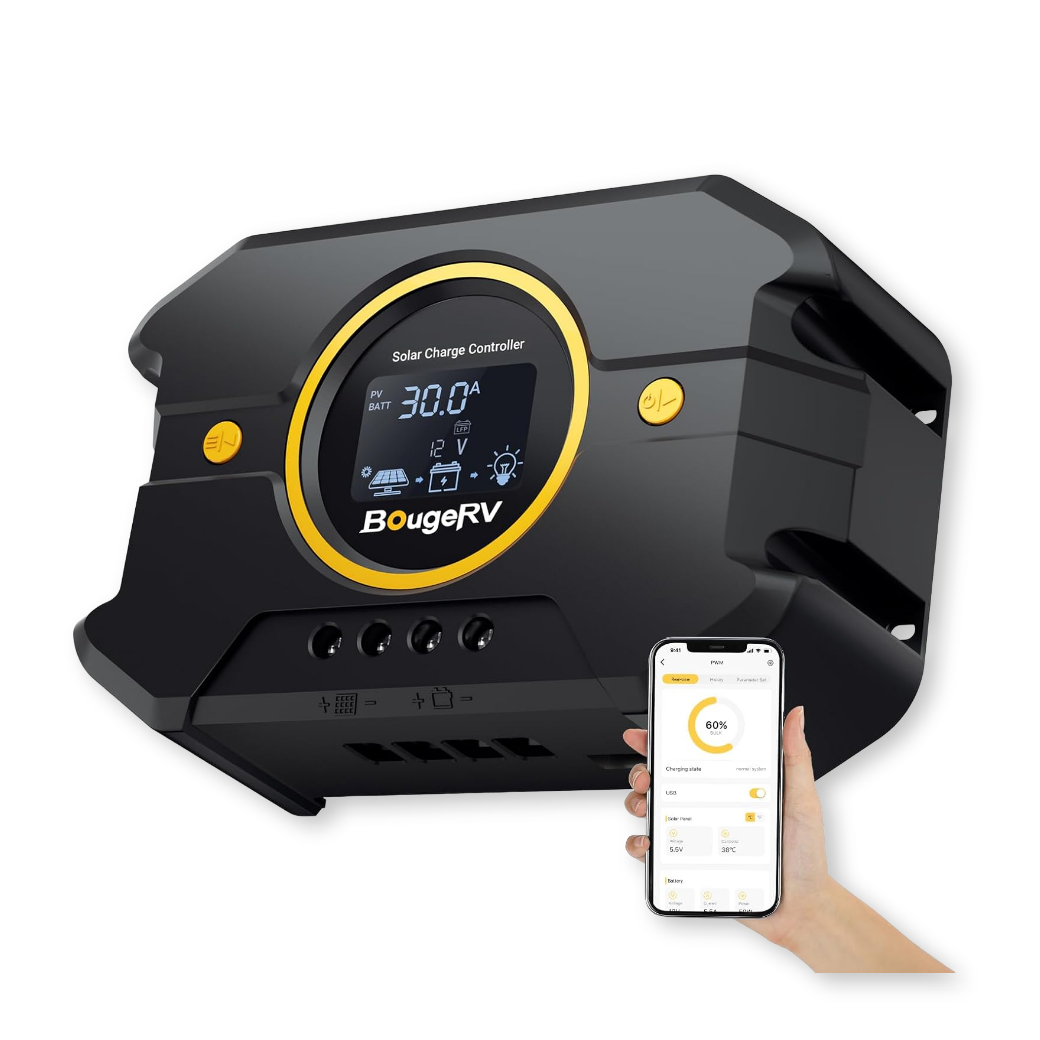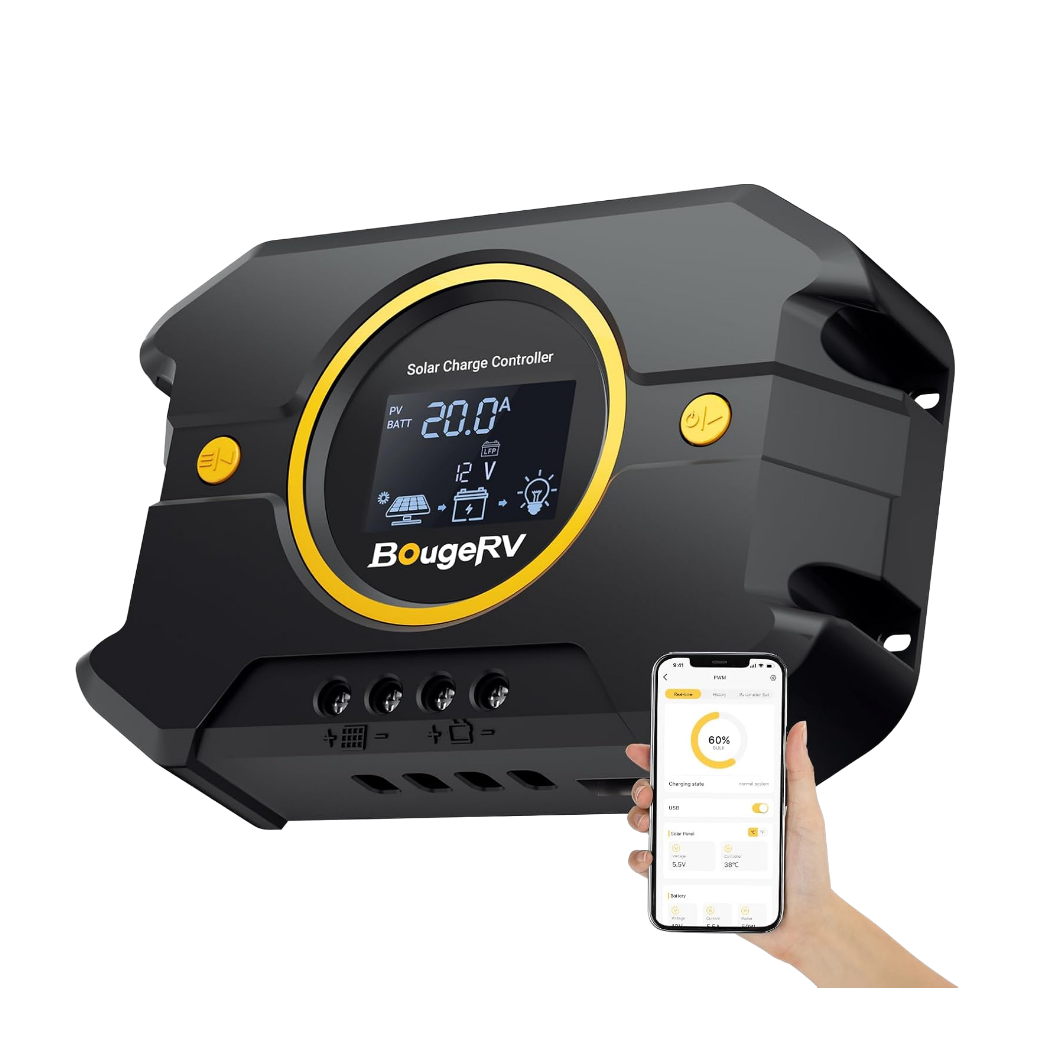Solar Charge Controller
Learn more about SOLAR CHARGE CONTROLLER
A solar charge controller is a device that regulates the voltage and current coming from solar panels to the battery. Its main function is to prevent overcharging, over-discharging, and short circuits, ensuring the battery stays in good condition and operates efficiently. It acts as a safeguard between your solar panels and battery, making sure the power flow is steady and safe.
The function of the solar charge controller is to regulate the charging and discharging of the battery, ensuring its stable operation.
- The electricity generated by the solar panel is affected by light intensity, resulting in unstable voltage. This unstable voltage can harm the battery. The solar panel charge controller reduces the charging voltage to ensure the battery's safety when the charging voltage is higher than the battery's working voltage.
- Additionally, the solar panel charge controller prevents overcharging and discharging. Once the battery is full, the controller slows down the charging speed to avoid damage from overcharging.
- Solar charge controllers can also prevent batteries from discharging in reverse to the solar panels.
When choosing a solar charge controller, there are 2 factors that need to be considered:
- the rated voltage of the battery
- the maximum output current of the solar panel
The voltage of the controller should be the same as the voltage of the battery. For example, if the battery is 12V, it is necessary to select a 12V solar charge controller. BougeRV solar charge controller has good compatibility, it recognizes battery voltage automatically and can be used for charging batteries with 12V/24V/36V/48V.
The current rating of the solar charge controller typically ranges from 10A to 60A or more. It needs to match the maximum current of the solar panel. And it would be safer if you increased the margin by 25%.
If you choose the BougeRVsolar charge controller, you only need to consider the impact of the output current of the solar panel. If the rated voltage of the solar panel is 12V, then the size of the required controller can be calculated using the following formula:
400W÷12V×125%=40Amp
Therefore, for a 400-watt solar panel, if your battery voltage is 12V, you can choose a 40Amp solar charge controller. If your battery voltage is 24V, you can choose a 20Amp controller.
In addition, for a 400W solar panel, it is recommended to use an MPPT solar charge controller because it enables the system to charge the battery at maximum power output.
When you increase the charging current by using multiple solar charge controllers at the same time, then you only need to connect each controller in parallel. This way, the charging voltage can meet the battery's requirements, and the increased current can charge the solar battery faster.
In addition, we recommend the use of MPPT solar charge controller, because the MPPT controller is capable of detecting the generation voltage of the solar panels in real time and tracking the highest voltage-current value (VI) to enable the system to charge the battery with maximum power output.
The MPPT solar charge controller, also known as the maximum power point tracker, is an electronic device designed to optimize the efficiency of solar panels. By continuously monitoring the solar panel array, it detects the optimal power point and converts the panels' higher voltage into a lower voltage suitable for charging the battery.
To connect a solar panel to an MPPT charge controller, you need to connect the battery terminal wires to the charge controller first, then connect the solar panel to the MPPT charge controller. Make sure all connections are secure and tight. It is important to note that the MPPT charge controller should be compatible with the solar panel's voltage and current ratings. Check the specifications of both the solar panel and the MPPT charge controller before connecting them.
PWM solar charge controller uses a pulse width modulation technique to vary the amount of energy that is sent to the battery bank. This helps to prevent overcharging and undercharging of batteries, which can lead to damage and reduced lifespan. The PWM solar charge controller is a cost-effective solution for small to medium-sized solar systems.
PWM charge controllers are a less advanced and less expensive technology compared to MPPT charge controllers, they have lower efficiency. Both types are commonly utilized and have similar purposes of extending the lifespan of your batteries.
Yes, you can mix MPPT and PWM solar charge controllers. However, it is not recommended as it can lead to inefficient charging and potential damage to the batteries. It is best to use either PWM or MPPT charge controllers throughout the system for optimal performance.
Please refer to this article: How to Choose the Perfect Charge Controller










